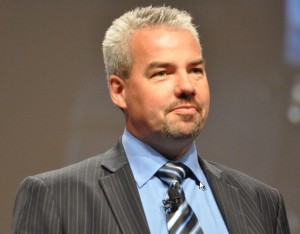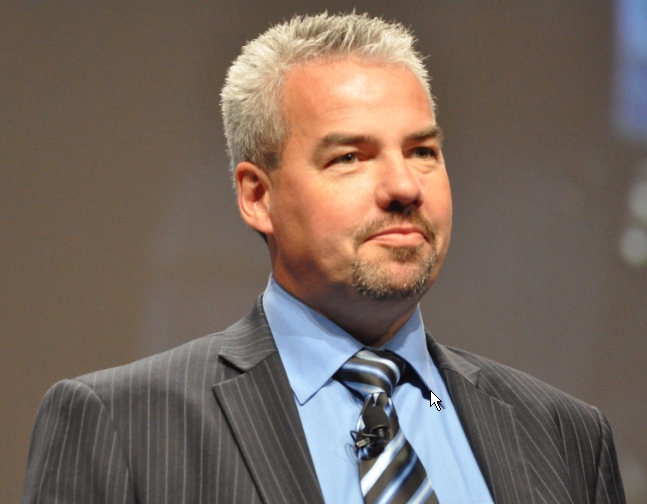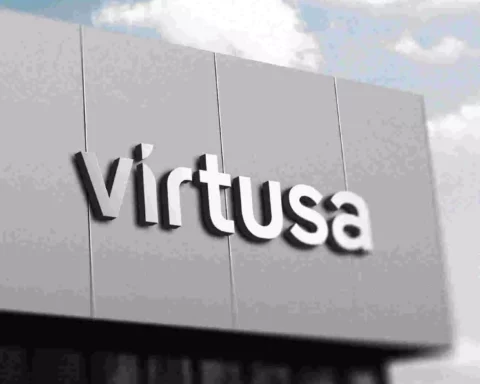Exclusive interview with Jean Turgeon (JT), Avaya’s security and networking expert; VP & Chief Technologist, Software Defined Architecture, WW Sales

IT Voice : From your travel around the world and being an expert, please describe how you see governments looking at national security from an IT perspective?
Mr. Jean : With everything going on right now in the world, I think a lot of people would guess Cyber Security is top of mind for governments lately, and in the foreseeable future. In fact I am sure many are starting to reconsider corporate support for BYOD, and certainly SDN where open code architecture is being promoted and expected to help drive business agility. The Indian government is looking for solutions that deliver components such as video surveillance, engagement solutions and sensors to enable IOT faster than it has ever been imagined. From a more fundamental security point of view, governments and enterprises are very concerned about anyone penetrating their corporate networks and assets, which exposes their intellectual property and of course potential citizens and customer information. Therefore, seeking for solutions that reduce the ability for hackers to gain access and visibility of their IP infrastructure and topology, tops the minds of decision makers in the private and public sector. There are solutions out there which can assist;however, they require a shift in mindset and a transition from the legacy architecture. Customers need to urgently open their minds and quickly evaluate what’s on offer. The key to a viable solution is to embrace an eco-system of technology to address these needs.
Not one vendor can do this on its own which re-enforces the need for an open architecture away from proprietary schemes. The good news is that there are solutions out there; the bad news is that if private and public enterprises are looking at the same vendors that built their networks 20 years ago proclaiming they can do it all, this approach will fail. My recommendation is for them to open their minds to an open architecture, and yet controlled with accountability from specific technology experts, which will provide pieces to the puzzle; this is clearly very complex and challenging.
The Avaya SDN Fx architecture which has been recently launched in India has the ability to support the security and mobility of devices connecting to the ever-growing Internet of Things. Environments such as those are found in cities, hospitals, schools, airports, manufacturing floors are blanketed with devices that require a more secure, mobile connection to the network, and may also require that the rest of the network is better protected from potential threats that could be triggered by them. With the Avaya SDN Fx solution provides automated and dynamic connectivity, mobility and a level of security to the network based on the device or user identity.
IT Voice : You’ve travelled to India for some time now, what tops the mind of public safety owners, what can you tell us about the vision of the Indian government and their challenges.
Mr. Jean : India is entering into an “era of engagement” which will be the engine of value creation to the country and its people. With this, the Government of India has come up with innovative initiatives like the Digital India, Smart City and Make in India initiatives. With these initiatives the government is aiming to bring the following changes:
- Digital India: country – wide fiber optic country by 2016; digitization of government services
- Smart cities – 2500 Wi-Fi enabled cities over 3 years and providing services to education, healthcare, financial
- Make in India initiative – sustainable growth and boost in the country’s overall exports
 I have been pleasantly surprised with some areas in Indiawhere some applications have been developed to provide instant location services as the person in crisis dials for emergency. This means some systems have already established both a voice and data channel, allowing location to be immediately sent to a central command, as the individual dials for emergency. This is very positive to see, but, as you can imagine it is not broadly implemented in all countries. Some are clearly lagging behind.
I have been pleasantly surprised with some areas in Indiawhere some applications have been developed to provide instant location services as the person in crisis dials for emergency. This means some systems have already established both a voice and data channel, allowing location to be immediately sent to a central command, as the individual dials for emergency. This is very positive to see, but, as you can imagine it is not broadly implemented in all countries. Some are clearly lagging behind.
The next step is to take full advantage of the multimedia capabilities and also enable a discrete video channel when dialing for emergencies. One benefit of the data channel through simple functionality is SMS; this means a video can be pushed to the person in crisis. Imagine someone having a heart attack in a restaurant right next to you but you are not CPR trained, what do you do? What if the emergency services operator could instantly forward you a video showing how to perform CPR? This can save a life. What if someone was trying to rub a bank, what if your mobile device could be instantly converted into a video surveillance input for the emergency response team to have live video feed of the situation as they are on route to the location where this situation is happening? This is what I call Smart-Safety and the use cases are unlimited. Smart-Safety is now live in many parts across the world and the region, but there is a wide opportunity to progress and make it consistent across countries.
IT Voice : Do smart cities create security challenges? What are they?
Mr. Jean : In fact I think it is the opposite if they are truly implementing a “smart city” solution. Smart city is more than just enabling Wi-Fi services. My observation is that there is a new trend taking shape: while Wi-Fi is certainly one of the services, part of most smart cities initiatives that I am seeing are adding video surveillance and analytics in very large scale, which is quite difficult once again when using a legacy infrastructure.
As governments provision all these new capabilities and services to their smart cities, they will have to review their infrastructure to be able to scale and meet the real time analytics requirements. They would also have to consider adding sensors technology to address various needs contributing to making the city safer. As an example, if the city uses natural gas, they may want to implement sensors to detect the flow and potential leaks of gas throughout the city to quickly react to a potential issue. For instance, governments can leverage video surveillance analytics to be able to intelligently track an Emergency Response Vehicles and control the lights and reduce the time to destination and collision potential; in many cities around the world, street lights are a source of wasted energy, which can be remotely controlled throughout the night depending on cars and people traffic intensity; by leveraging real time analytics, this can be easily achieved and therefore reduces electricity consumption without compromising residents or visitors security. There are many examples like this, but I would summarize in saying, smart cities will improve security as opposed to augment or create security risks if properly implemented.
IT Voice : How are vendors like you linking IOT with security? What are the challenges?
Mr. Jean : To address and enhance security as part of a smart city initiative, many devices such as cameras, sensors, wearables, etc. need to be deployed and implemented. All these require connectivity at the edge of the networking infrastructure. Of course, carrier wireless will play a key role into this, but many will require connectivity to the city infrastructure and even the carrier connected devices will likely have to connect securely back to some common analytics infrastructure securely.
All these are what we refer to as edge devices which is what the Internet of Things (IOT) or Internet of Everything (IOE) is all about. The challenge is how to securely connect all these devices at the edge of my city network, and connect securely the ones through a carrier or 3rd party infrastructure? This means we need much more agility to add 10,000’s of devices to a network that, in the past, would require multiple physical networks to scale and not compromise security. IOT and security as well as scalability and reliability, all need to be seriously evaluated. What is the point of deploying IOT if it cannot scale, not secure and not reliable? That wouldn’t be too smart would it?
In the end it converges to the need for next generation architecture to address the next generation smart cities needs. You can’t achieve these business objectives with a 20 or 25 years old client / server architecture. The good news is there is a next generation architecture being proposed but unfortunately many vendors are trying to fool the market by renaming and shifting complexity from one place to the other and hope customers will not notice. A due diligence is definitely required to achieve these objectives. The good news is that there is a solution to this: a next generation matrix architecture based on Ethernet transport and optimized for IP services regardless of their connectivity methodology. Avaya introduced SDN Fx for that exact reason, to scale, enhance security, deliver best in class reliability and provide the best foundation to smart cities and IOT/IOE. Already demonstrated near 15,000 cameras running over a single converged infrastructure with ONE protocol, 500ms or better recovery times. This is the kind of infrastructure shift smart cities require to save lives, enhance resident experience, and enable new services the community will benefit from.
IT Voice : Nations have different visions of what smart cities are? What is a smart city from your perspective?
Mr. Jean : Smart cities are about enabling new services to better service your population. This is about making your city safer, offering new services while enabling consumers to use to drive net new revenues or in some cases focused only on providing a better experience to visitors and tourists.
If residents feel safe, get best in class services and feel their city is at the forefront of offering new services,they will be happier and they will share their feelings with others and especially on social media. Smart cities are all about delivering on that objective. It is about providing best in class services, making governments and cities stand out from other destinations around the world. We all know how many destinations people can choose from? We know how many locations people can choose to live their lives in? Would you want to live in a city not committed to improving the population quality of life? All of these define in my view what smart cities are all about. Drive the smart city initiative to a new level and have the world know about your city being the best, most secure and interesting to visit and potentially move to.
IT Voice : From a technical perspective, how can governments make their cities safer?
Mr. Jean : Cities have to move to a different architecture model to support next generation smart-x services. The legacy client-server model has served us well, but over 25 years we have increased its complexity and made reliability a huge challenge due to complex protocols required to address all of these business needs. From security, to scalability, to video streaming to recovery times from failures; the legacy model is no longer suitable and it is time to press the “reset” button and start with a new mindset. Technically and simply, it is all about Ethernet and IP. That’s it. So, how do we best support wireless or wired services over Ethernet to better support IP based applications and services? It is not by renaming old stuff something different that we will achieve these objectives.
I recently published a blog on “Lipstick on a Pig”. In the end you may try to fool people to think the pig looks way better, it is still a PIG. The market has to stop tolerating vendors trying to fool them and challenge all of them to offer something innovative and suitable to meet the Smart Cities, IOT/IOE requirements. Someone famous once said, doing the same thing over and over and expecting different results is called….insanity…let’s not go down this path, please. The technology is available now, but some vendors are lagging being because they have been so fixated on the data center. Consider this: how many of residents or end users sit in the data center? How many video cameras for traffic control or sensors to detect gas leaks are deployed in data centers? Some vendors are clearly missing the mark. Avaya saw this opportunity and has differentiated its offering by optimizing its next generation architecture to be perfectly tailored to enable IP services over Ethernet. Avaya SDN Fx is the smart choice for Smart Cities and IOT, there is no doubt in my mind.








